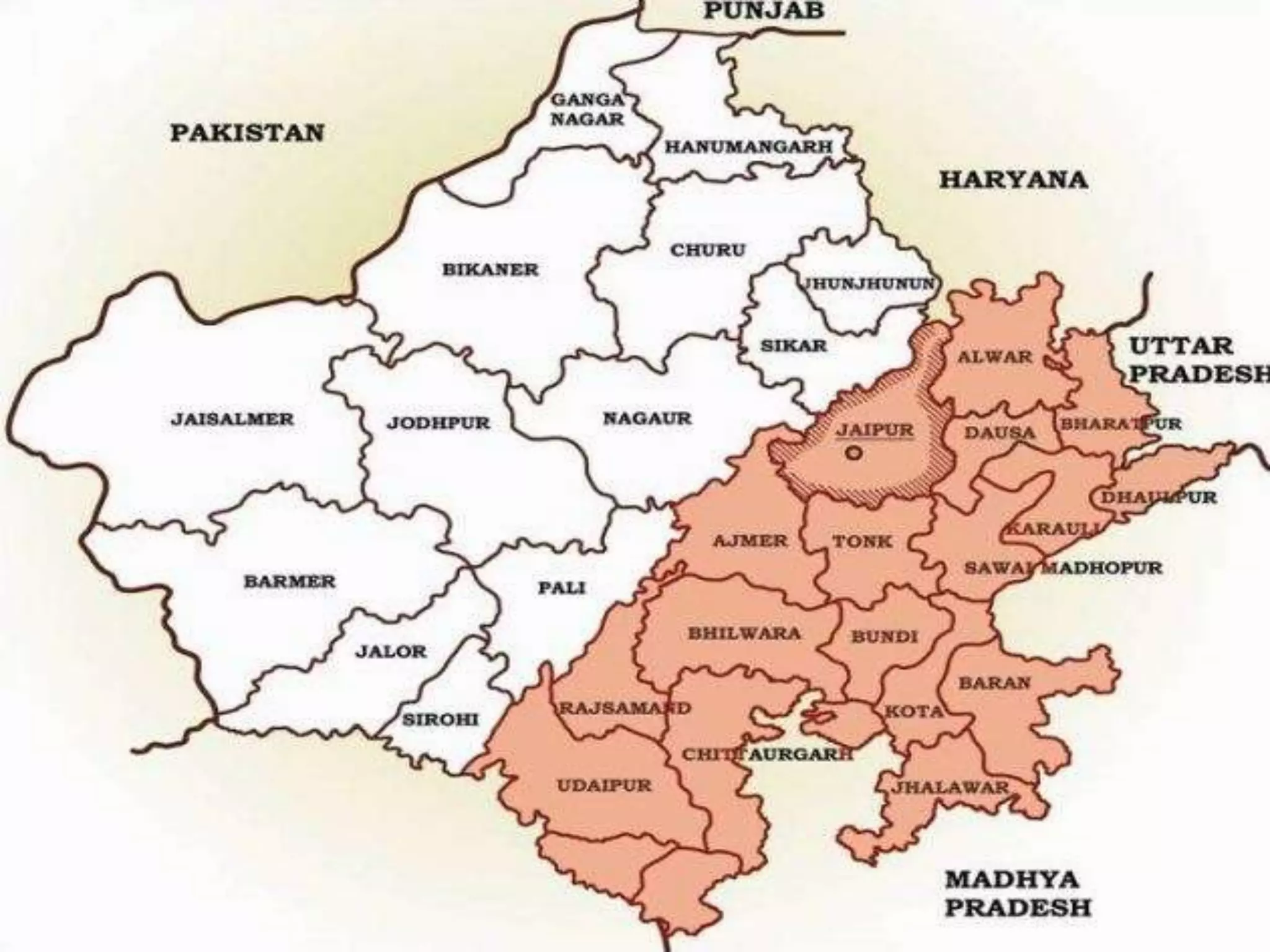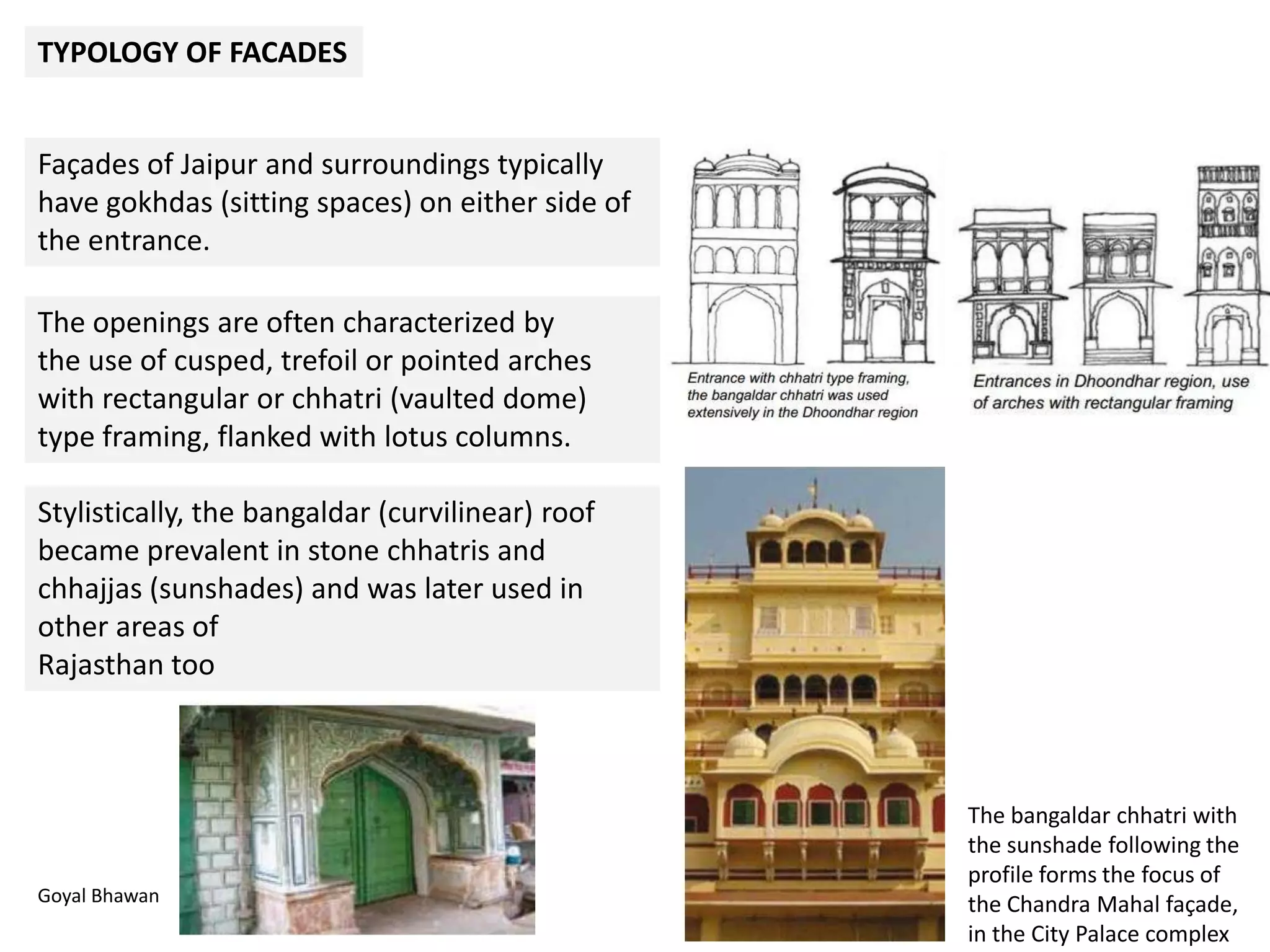Jaipur was founded in 1727 by Maharaja Sawai Jai Singh II as the new capital of Amber. He followed principles of Hindu urban planning to design the city, dividing it into nine blocks with wide streets and central squares. The city was planned with military defense and expansion in mind. Over time, new structures like Hawa Mahal were added and the city grew beyond its original walls. Today, Jaipur is known for its pink buildings and is a well-planned city with distinct architecture, markets, temples, and palaces that showcase Rajasthani culture and heritage.


























